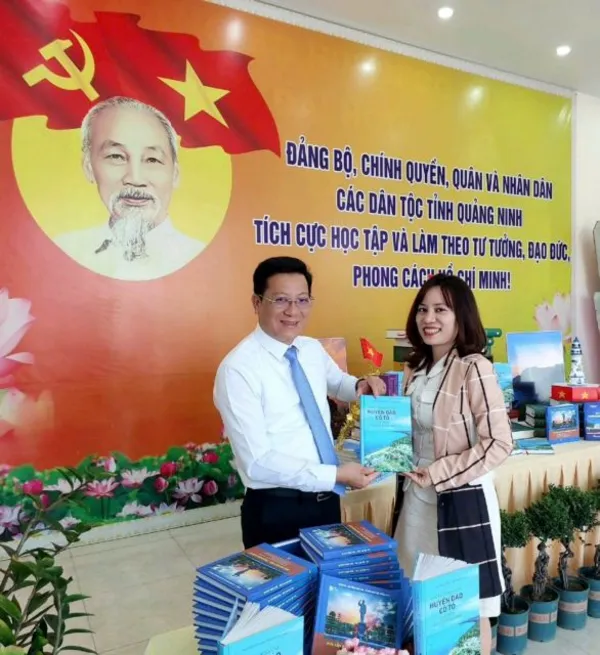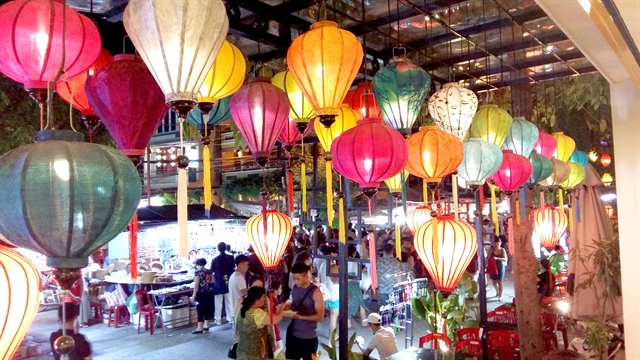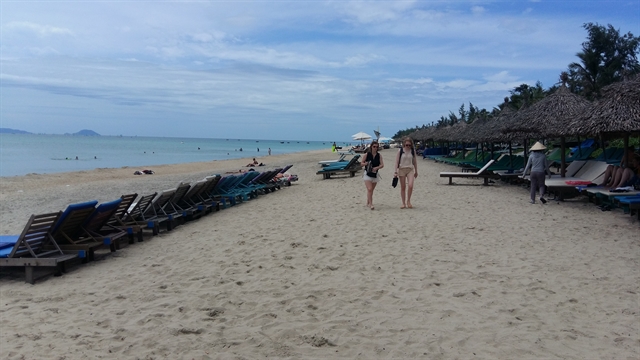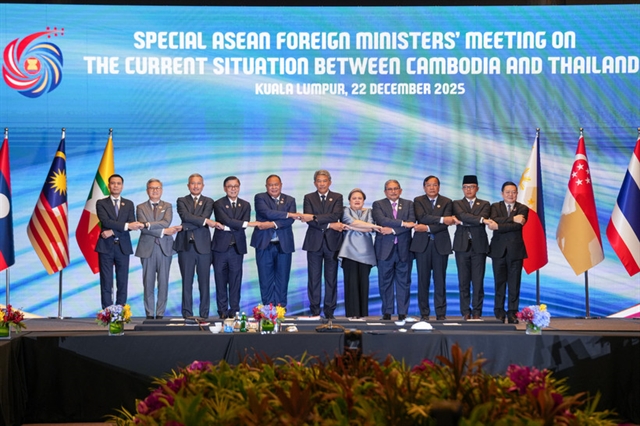 Society
Society


|
| Lanterns use to light up the Old Quarter of Hội An. The tourism industry will restructure its products after losses caused by the COVID-19 pandemic. — VNS Photo Công Thành |
HỘI AN — Having benefited from heritage-based tourism over the past two decades, the ancient town of Hội An – a UNESCO-recognised world heritage site – should dramatically make its tourism products more ‘green’ and sustainable on the basis of nature and culture in creating unique value and attractions for tourists in the future.
The tourism hub in central Việt Nam has been facing serious losses caused by the global COVID-19 pandemic, as 80 per cent of tourism businesses, including tour operators and accommodation, have not yet resumed operation, while all bookings were cancelled.
Chairman of the Quảng Nam Tourism Association Phan Xuân Thanh spoke at a conference on restructuring the provincial tourism industry, stating that it’s time the industry reviewed its status-quo in recent years, and discuss a new stage of sustainable development for the ‘green’ industry.
“The provincial tourism should focus on developing and protecting ‘green’ environment, culture, natural resources, renewable energy and organic produce,” he said.
“Hội An has various destinations, including gardens, craft villages, nipa palm forest and large rural areas.”
Phạm Vũ Dũng, owner of a travel agency in Hội An, said tour services around the Old Quarter have remained unchanged since they debuted 20 years ago, while local people are not yet trained on professional tourism practices.
He said COVID-19 was also a chance for Hội An to look at its tourism plan and management, as the Old Quarter remained a main focus on all tour services.
“The Old Quarter should be kept as its original tranquil space. Ancient architecture and lifestyles of people in the town were the main attraction to tourists, but it needs more quiet space,” Dũng said.
“There are different options for tourists in a 5km radius from the Old Town – Trà Quế garden, Kim Bồng carpentry village, Triêm Tây eco-village, Thanh Hà Pottery and An Bàng beach. The suburban area could be linked with the Old Town as a destination chain to ease traffic and overcrowding.”

|
| An Bàng beach is a popular site near Hội An. Beach vacation is an option for tourists visiting Hội An. — VNS Photo Công Thành |
Dũng said the tourism industry in Hội An should offer more different tourism options for tourists from Asia, Europe, the US and the luxury segment.
Phạm Thị Hồng Trang, from Thiên Minh Group, said Hội An should rearrange its tourism structure to attract more tourists with its resources.
Trang said Hội An could meet all the requirements for beach vacations, cuisine, eco-tour services, exploring nature, watersports as well as rural experiences.
Former party secretary of Hội An Nguyễn Sự who masterminded the two-decade development of the ancient town, said it’s time to change tourism development.
He said tourism products should be built on the basis of nature and culture as well as creating events in the Old Quarter.
He said tax policy and promotion programmes should encourage businesses to create more attractions.
Trần Trọng Kiên, a member of the tourism advisory board of the Government, said the global tourism industry witnessed the worst situation in 20 years after being hit by COVID-19.
He said 53 per cent of Vietnamese want to travel, and 44 per cent booked tours online after COVID-19.
Kiên said 68 per cent of Vietnamese tourists considered health and security conditions at destinations after the pandemic.
Michael Croft, head of Office and UNESCO representative to Việt Nam, said: "It is good to be back in Hội An, back with our friends in Quảng Nam Province as we discuss a new reality for sustainable tourism in the province, and indeed, for the country in the time of COVID-19.”
He said: “In Việt Nam, according to official ministry reports on the impact of COVID-19 on tourism in Việt Nam, 19 per cent of Vietnamese enterprises have suspended their operation and downsized; over 90 per cent of workers directly employed by tourism services are unemployed and 98 per cent of airline employees have been laid off. Nearly 47,000 cultural and creative businesses report needing support from the Vietnamese Government, since most of them are small and medium-sized, without large financial resources, and rent, rather than own, their facilities.”
“By any measure, such statistics are unprecedented," Croft said, adding: "It is important to remember that this crisis also represents an opportunity to change our approach – to build back differently, to build back better."
It is suitable to do so in Quảng Nam Province, a province which has been a pioneer in conservation of cultural heritage and the promotion of sustainable tourism in Việt Nam, he added.

|
| Bicycle tours in rural areas around Hội An are popular among tourists. — VNS Photo Bùi Văn Tuấn |
“This ‘quiet’ period is also an opportunity to re-evaluate supply chains, energy sources and waste management. That it is an opportunity to update site management plans and modernise strategies. And with mass tourism looking even less sustainable now than it did before, it is an opportunity to re-design tourism products and experiences, and to restructure the market to provide a high-end, environmentally friendly and healthy tourism experience, an authentic experience appealing to visitors who are looking for a unique holiday in a unique destination.”
Michael Croft added: “Across the country, more emphasis needs to be placed on a value-based approach that sees higher yielding return visitors – an indicator of successful tourism growth as opposed to just higher numbers of visitors. Such an approach can both stabilise the economic return, making it more predictable, while helping limit the negative environmental and social impact of tourism.
"The promotion of new cultural industries provides new opportunities for vulnerable populations, since the economy of culture relies significantly on the informal sector, where poor and marginalised populations, including women and ethnic minorities, often find employment."
“If we can see that authenticity is a key to success, the other major factor is sustainability. As a major agent of change, the tourism sector needs to take a leading role in ensuring that environmental impacts from tourism activities are managed in a sustainable manner – and here it is so important to consider this before a project goes ahead," Croft said
"Much more attention is needed to ensure sustainable resource consumption and more effective waste management practices – and here, initiatives that raise public awareness on the importance of such measures – including the awareness of visiting tourists – will be a crucial aspect of success.”
Croft stressed: "Sustainable development isn’t about slowing down, it’s about doing things differently."
In Việt Nam, a sustainable tourism agenda will not just promote a better and healthier living experience and reinforce the sense of solidarity and inclusion in communities, but also can provide new and more meaningful job and trade opportunities for the people." VNS




